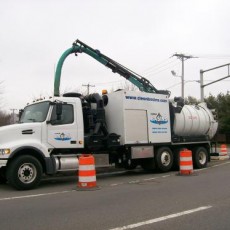How Trencher can Save You Time, Stress, and Money.
Wiki Article
The Main Principles Of Mini Excavator
Table of ContentsFacts About Excavation Contractors Near Me UncoveredLittle Known Questions About Excavation Contractors Near Me.7 Simple Techniques For TrencherDemolition - An OverviewThe 3-Minute Rule for General Contractor


Scrapers or Pans excavate dirt in one place, haul and also dump the soil in an additional spot (trencher). It is challenging to match the efficiency of scrapers for cut/fill soil operation if the haul distance is less after that a mile. Scrapers are normally drawn by a rubber tire wheel tractor and are often pushed with the cut area by a bulldozer.
There are many times that scrapers are not made use of for website grading and also a dump vehicle is used: the haul might be to long, the haul might go across roadways where scrapers are not allowed, tough rock may be experienced, tools availability, and so on. Discard vehicles remain in common usage and also possibly call for little conversation.
Several vehicles have a top-hinged tailgate that can not discard any rock broader after that the tailgate width. "Rock body" beds, on the other hand, have no tailgates and can dispose any size rock, although their volume capacity is reduced. These web links show devices requirements for a number of common dump vehicles. Compaction Equipment enhances the density of the soil and sometimes provides a smooth, rolled surface.
7 Simple Techniques For Demolition
From a simple examination pit to percussion boring to core boring the owner has increasingly more pricey choices that yield significantly far better information regarding the site underground. The Owner on a 100,000 SF structure task may license twenty uninteresting places with split spoon soil examples taken until rock is reached as well as then core samples of rock.Knowing the type and quality of rock (from the core examples) as well as place of rock (from the soils boring) is an actual benefit in jobsite planning. Alternatively, the Proprietor of a 100,000 SF building might determine to wage no geotechnical screening whatsoever. The decision regarding geotechnical testing is typically made by a Proprietor without input from the Building and construction Manager.
An expertise of the approximate place of the rock aids the Construction Supervisor to intend the series of steps adhering to rock excavation. If rock is in one edge of a huge building job, for example, the planet excavation might start at the contrary end of the building in order to start structure work soonest.
Starting the structure job early would be a good suggestion if the rock could be eliminated by ripping. Nevertheless, if the rock is exceptionally tough and also requires considerable blasting, it may be prudent to hold foundation work up until the blasting is completed. The Building and construction Manager ought to coordinate these kinds of choices and also use all the technical date readily available.
What Does Excavator Do?
Unclassified excavation states that all rock or other unexpected products (excluding dangerous products) run into in the sitework will certainly be the obligation of the Contractor at no modification in agreement price. An unidentified excavation is easier from a book-keeping point ofview as well as puts the responsibility for geotechnical conditions onto the Sitework Service provider.It's remarkable what a heavy rain can do to a construction job. Prior to the rainfall, the website may be dry, heavy equipment successfully moving planet, the other trades smoothly doing their job.
In most areas of the world, the Building and construction Manager need to remember a straightforward fact: IT More Bonuses WILL RAINFALL. Good preparation can reduce the damage and also interruption of a hefty rain to a jobsite. Frequently the excavation as well as grading is delegated the Sitework Professional (as well as their Foremen is responsible to manage and also direct the hefty devices and also operators).
The Building and construction Supervisor have to be continually mindful of what rain will do to the task site. It is not unusual for the Sitework Supervisor to function their heavy devices for maximum effectiveness as well as wish it doesn't rain. Among the very best means to plan for rain is to incline all grades to drain as well as to smooth rolled the surface prior to a rain.
The Facts About Demolition Revealed
The Construction Supervisor should be well-balanced adequate to insure that heavy rainfall does not quit working on the job longer than needed. Daily conversations with Sitework Foremen might be needed to attain this objective. Any type of time excavation is needed below the existing water level on a job, the procedure of dewatering have to be thought about.In a genuinely natural dirt, the water takes a trip so slowly through the clay or silt that dewatering is not typically essential for the reasonably short time of excavation. Dewatering may be required for a single footing excavation or for an entire task website. The most common dewatering techniques are trench drains, deep wells as well as well points.

Ground water seepage can also be lowered by cutoff approaches such as sheet loading. High dewatering costs have actually faded the profit margins on much too many tasks.
This alternative must constantly be taken into consideration when assessing the possibility of dewatering. Undoubtedly the option is only sensible if gravity can run the water to reduced ground. Trench drains visit this site can be cut with a backhoe as well as loaded with a coarse, granular product (# 4 stone as an example), but care must be exercised in choosing the water outlet kind and location.
The Definitive Guide for Concrete Contractors
A siphon, necessarily, uses air pressure to lug water from one altitude, up over a barrier, to a lower elevation. The pipes in a siphon system need to be impermeable and also some resourcefulness is frequently called for to completely fill up the siphon pipe. The siphon pipe have to be complete for the siphon to start.A deep well consists of a pump, hose pipe and a vertical well casing. The pump consumption is at the base of the well covering (generally some crushed rock is put there as a filter medium) (excavating contractors). The water is inflated the hose, out of the well casing, as well as to an ideal discharge place.
In a coarse sand, as an example, a big location can be pumped to near the pump consumption altitude. A less permeable dirt, on the other hand, lowers the efficiency of a deep well. Because the pump is normally at the base of the deep well, there are no height limitations as a result of vacuum lift, and deep wells can reduce the groundwater over 50 feet.
Under of the wellpoint there is a 2 foot long screen as well as shutoff, water jets out of this shutoff as well as produces an opening into which the wellpoint pipe can be reduced. This hole is frequently made a larger diameter (for instance 10 inches) to enable for a click to read rugged sand backfill to aid filter the water (excavating contractors).
Report this wiki page